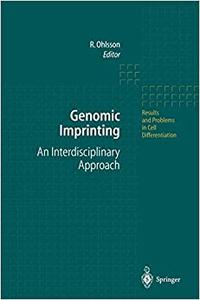
 |
 Geography Quiz Book: 300 multiple choice questions by Jim Hoff English | 2022 | ISBN: N/A | ASIN: B0B6QH15JG | 95 pages | EPUB | 0.19 Mb Perfect for a pub quiz or fun with family and friends. Suitable for all quizzing abilities, to be enjoyed with or without multiple choice. The geography categories in this volume include:MountainsRiversOceans, seas, lochs and lakesGlaciationNational parksIslandsDesertsWaterfallsCitiesCoasts and more  Rolf Ohlsson, "Genomic Imprinting: An Interdisciplinary Approach" English | 1999 | pages: 337 | ISBN: 3662219565 | PDF | 36,2 mb The form and function of every living organism on the earth depends on the complex regulation of gene expression. This is carried out by controlling and interdigitating spatial and temporal patterns of gene activity during the life time of eukaryotic organisms. This is most dramatically apparent during early stages of development, when new types of cells and organs are being formed, often during very short time spans. To achieve this, it is vital that developmentally important genes can be kept in inactive or active states which are stably inherited in the soma. Indeed, it is now wellknown that the propen sity for a gene to be transcribed or silenced is stably propagated through many cell generations, even from parent to progeny. This phenomenon constitutes a type of extragenetic or epigenetic memory of cell identity and developmental potential which has been fundamental to the evolution of complex lifeforms, such as the reader of this book. This monograph focuses on a particular aspect of the epigenetic control of gene function: genomic imprinting. This defines a phenomenon where some genes or whole chromosomes can be silenced, activated, or even deleted depending on their parental origin. The impact of genomic imprinting is most clearly seen in the areas of cancer, clinical genetics, and development. Many of the processes associated with genomic imprinting can be observed in plants, yeast and man, for example, and may constitute, therefore, principles which are very conserved on an evolutionary scale. |